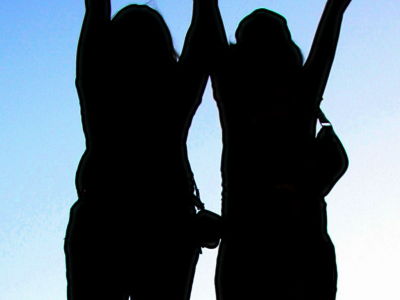'Life Inside The Kowloon Walled City' depicting life in one of the world's largest huge slums 'Kowloon Castle' that once existed in Hong Kong

Hong Kong's ' Kowloon City ', which used to be crowded with haphazardly built skyscrapers and gave off a unique atmosphere that is inaccessible, has become a literal lawless area beyond the reach of any government, and is home to criminals and brothels. , It was one of the world's leading slum areas, known around the world for being called the 'Devil's Den' where drug dealers gather, and for being the setting for many movies and games. Kowloon Castle looked like a crime city from the outside, but it is surprisingly unknown that the actual appearance was a place where many children and even the elderly lived. An infographic that summarizes the lives of people in Kowloon Castle is ' Life Inside The Kowloon Walled City '.
Kowloon Walled City: Life in the City of Darkness | South China Morning Post
Infographic: Life Inside The Kowloon Walled City | ArchDaily
http://www.archdaily.com/361831/infographic-life-inside-the-kowloon-walled-city/
Kowloon Walled City , commonly called 'Kowloon Walled City', has more than 500 buildings in a narrow area of 120 x 210 meters, and at one point, as many as 50,000 residents lived there. It was a slum.
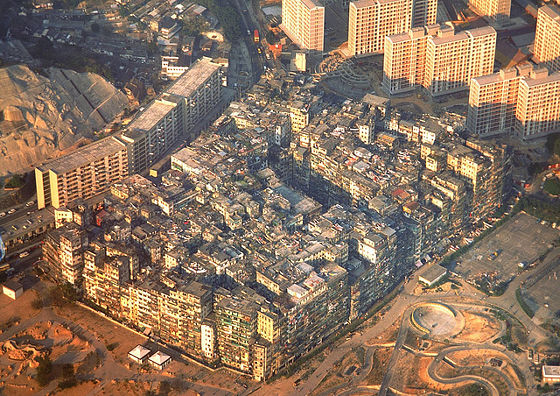
By
Contrary to that image, many residents are said to have led a very normal life. In fact, it is not that there was no aspect of 'crime den', but it is said that many of them were drawn by movies and dramas.
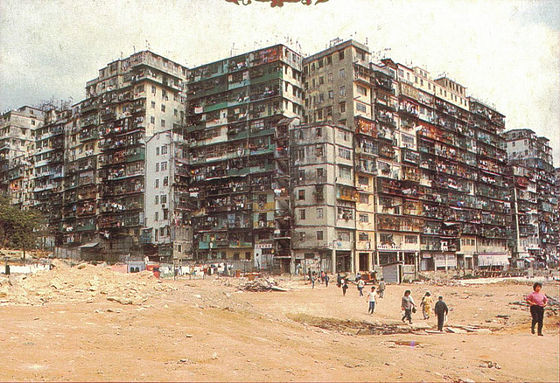
By
In the infographic 'Life Inside The Kowloon Walled City', such a building of Kowloon Walled City is boldly cut and the state of the people living inside is drawn.
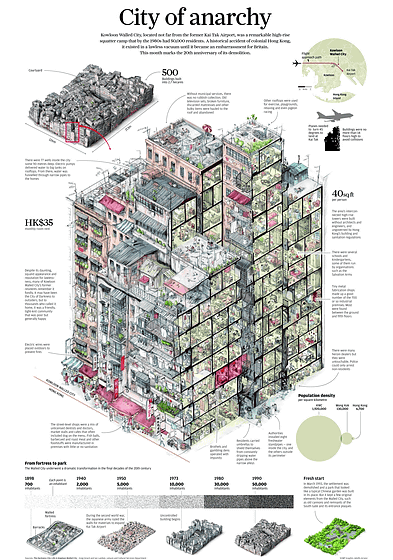
As shown by the infographic named 'Anarchy City', Kowloon Walled City was a city where countless skyscrapers were built chaotically. At its peak in the 1980s, more than 50,000 people lived in Kowloon Walled City, which was located near the former Kai Tak Airport, known for its 'Hong Kong curve' where jumbo planes land while turning. was living

The size of Kowloon Walled City is 126m x 213m and the area is 2.7 hectares. In this small area, more than 500 buildings such as elongated buildings called 'pencil buildings' were built. There was also a courtyard surrounded by buildings in the middle of the area.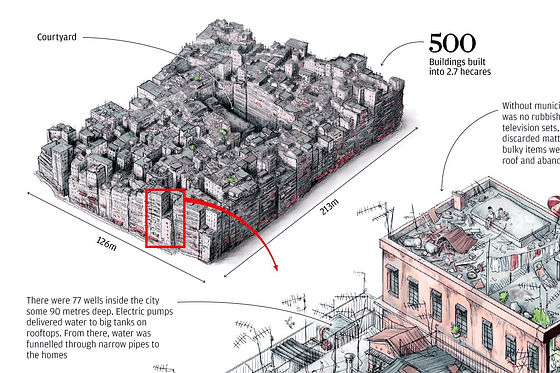
Among them, 77 wells with a depth of 90 meters or more were dug, and electric pumps were used to pump water necessary for daily life into tanks on the roof of the building. From there, water is sent to each household through thin pipes.
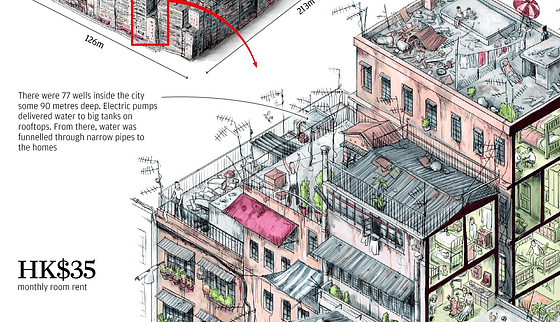
Due to the state of anarchy, there was no garbage collection at Kowloon Walled City. Bulky garbage such as old televisions, old furniture, and discarded mattresses were left on the roof of the building. On the other hand, the rooftop, which is one of the few 'places where the sun shines', was used for exercise, children's playgrounds, and places to relax, and even pigeon races were held.
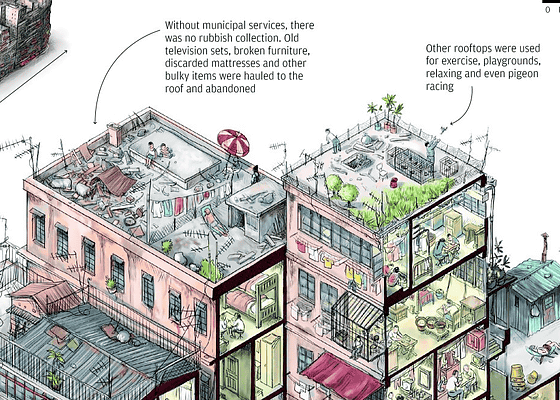
The positional relationship between Keitoku Airport and Kowloon Walled City is like this. Aircraft entering the airport will turn 45 degrees to the right in front of Kowloon Walled City and land on the airport runway. The only regulation in the building of Kowloon Walled City was the provision of 'height of 14 floors or 45 meters or less' to prevent contact with aircraft.
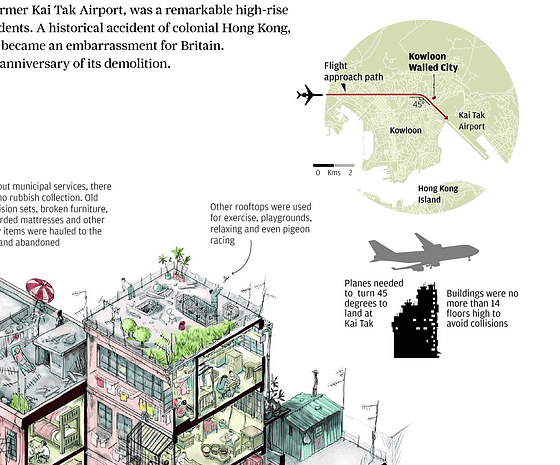
The average population density is a tremendous number of 1 person in 40 square feet (about 2 tatami mats) because the residents were densely built in a pencil building built to snuggle up. Since the regulations of the Hong Kong government are not applied (cannot be), hygiene laws etc. were not complied with.
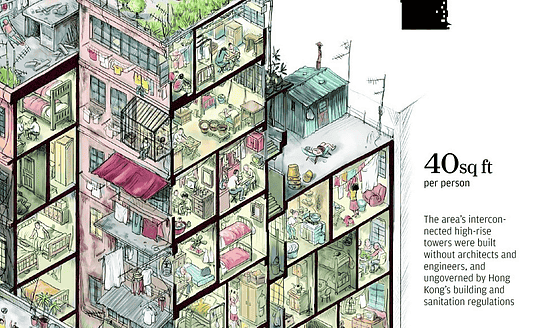
Contrary to its intimidating appearance, the former residents feel nostalgic for their old days. From the outside, Kowloon Walled City looked like a 'dark city', but to its inhabitants it was a poor but happy, close-knit community full of relationships.
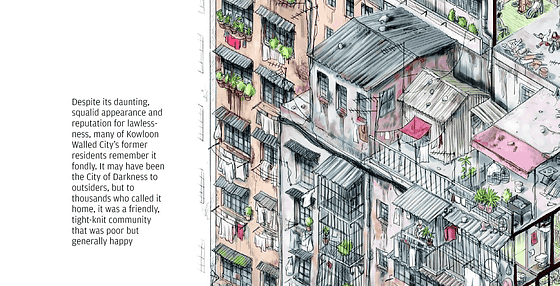
The wires that send power to each home were sometimes routed outside the building to avoid electric shock.
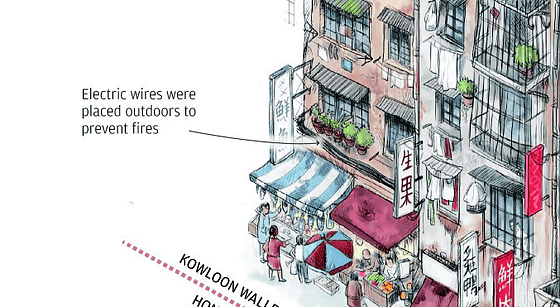
Also, surprisingly, there were schools and kindergartens in Kowloon Walled City. Many were run by the Christian charity
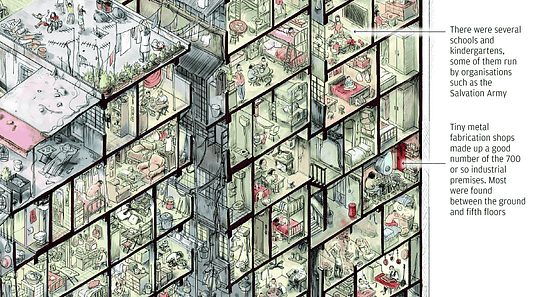
Buildings were erected to the very edge of the line of power for the Hong Kong government. The basement facing the road was lined with unlicensed dentists, stalls, and cafes, some of which served dogs as a menu item. Processed foods such as fish balls and meat products that are popular in Hong Kong are said to have been made in processing factories with almost no hygiene control.
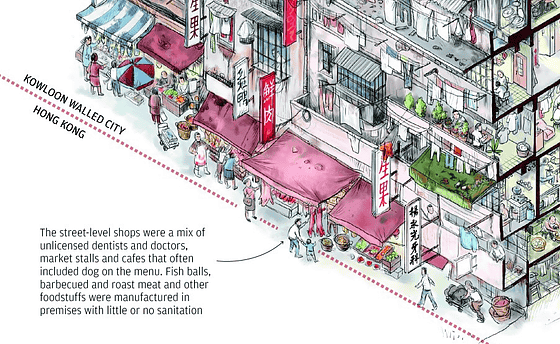
There were brothels, gambling houses, and drug dealers in the area, but of course, no one was to blame. Water dripped from somewhere inside the building, so residents had to walk with umbrellas. In addition, there are 8 water supply facilities in the area, 1 inside the building, and 7 water pumps around the building. The population density per square kilometer is 6,700 in Hong Kong as a whole, and 130,000 in downtown Mong Kok, but the Kowloon Walled City was 1.92 million, which greatly exceeded this.
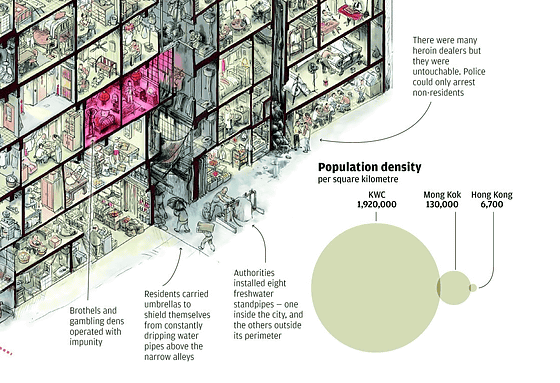
At the end of the infographic, the history of Kowloon Walled City is introduced.
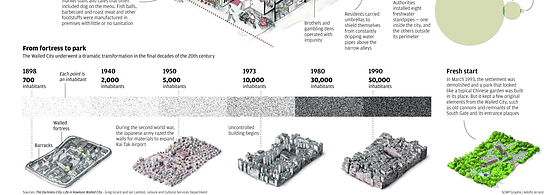
Kowloon Walled City was built as a military fortress to protect trading ships from pirates. In 1898, the British began leasing the territory, but Kowloon Walled City will be left as a territory of the Qing government as an exception. During World War II, the Japanese army that occupied Hong Kong demolished the walls of the Kowloon Walled City in order to procure materials for the expansion of Kai Tak Airport. The population at that time was 5,000.

At that time, mainland China was in a state of civil war between the 'Kuomintang' led by Chiang Kai-shek and the 'Communist Party' led by Mao Zedong. In the 1970s, as the construction of reinforced concrete began, the population density accelerated, and in the 1990s it became a disorderly state with more than 50,000 residents.
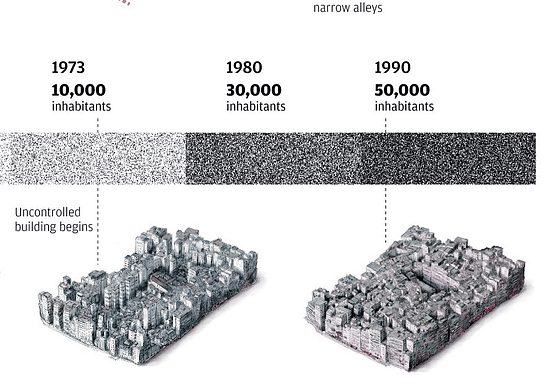
In 1993, all residents were evacuated from Kowloon Walled City and all buildings were demolished. Parks such as '
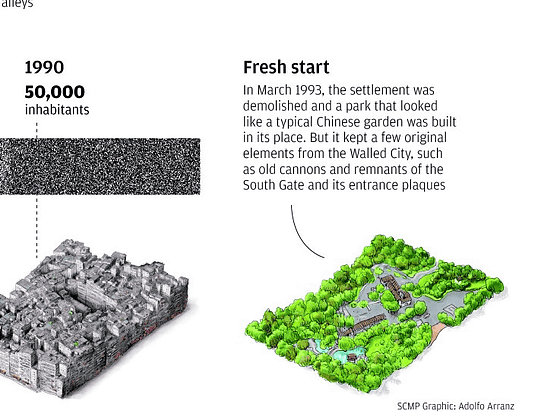
Related Posts:
in Design, , Posted by darkhorse_log


